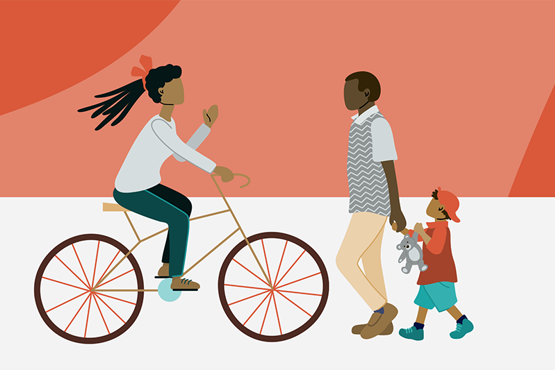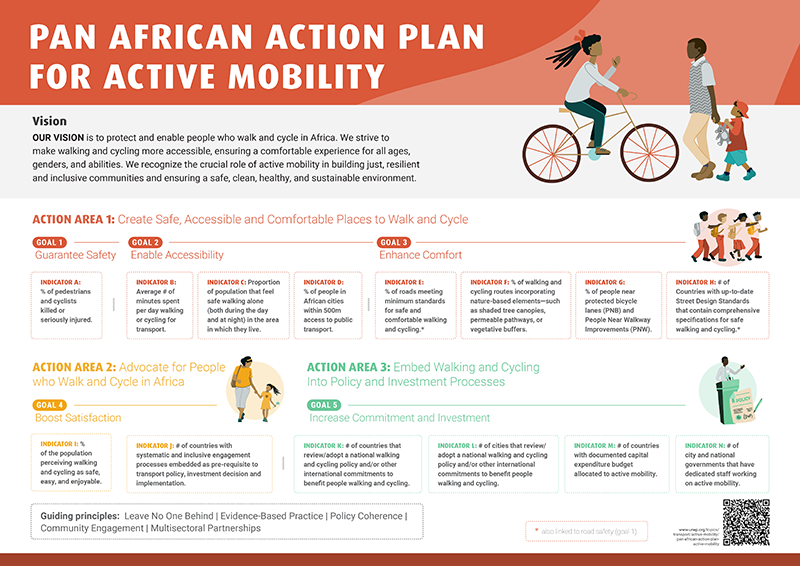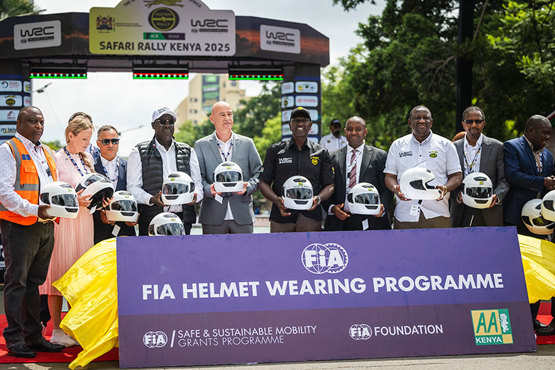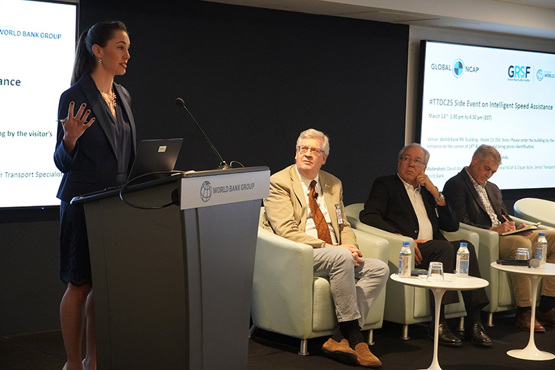Pan African active mobility agenda launched at World Urban Forum by UNEP, supported by FIA Foundation

The United Nations Environment Programme (UNEP), UN-Habitat, and the World Health Organization (WHO) launched the Pan African Action Plan for Active Mobility (PAAPAM) at the World Urban Forum in Cairo, Egypt, supported by the FIA Foundation.
The Plan, the first of its kind, marked a significant milestone in ensuring a just transition in the transport sector. More than a billion people in Africa walk or cycle for almost an hour daily, yet 74% of assessed roads lack footpaths, and 92% have no crossing. Assessments show that investments in infrastructure for walking and cycling could help prevent over 5,600 deaths and 41 million tonnes of carbon emissions in African cities over 10 years.
PAPAAM was developed through extensive regional, national, and local consultations with over 1,300 stakeholders across Africa in partnership with the FIA Foundation. It provides a comprehensive framework that emphasises the importance of investing in walking and cycling and other non-motorised transport modes for health, environmental, air quality, road safety, and social equity - and ensures that no one is left behind by the mobility transition.

"While we know that transport is one of the largest emitting sectors in Africa, action for active mobility is not just about transportation," said Elizabeth Maruma Mrema, Deputy Executive Director of UNEP. "It's about ensuring safe, clean, healthy and sustainable environments and increasing resilience in both urban and rural areas."
The initiative launched just weeks after multiple international development partners signed the Hamburg Charter for Inclusive and Just Mobility, emphasising equitable and climate-friendly access to opportunities and empowered and integrated public transport.
Africa faces significant mobility challenges. Despite having only 3% of the global vehicle fleet, the continent accounts for 19% of global road traffic deaths, with 33% being pedestrians. While populations rely heavily on walking and cycling throughout the region, comprehensive infrastructure still needs to be improved.
The health implications of current transport systems are significant. Recent WHO data shows that air pollution caused 920,862 deaths in Africa in 2019 – nearly 495,000 being deaths from respiratory diseases.
"This action plan represents a crucial step toward healthier and safer cities," stated Dr. Matshidiso Moeti, Regional Director for WHO's Africa Region. "By promoting active mobility, we are not just fighting climate change – we are addressing a major public health crisis that affects millions of Africans through air pollution, physical inactivity, fatalities and injuries due to road crashes."
"A united approach, not only between UN agencies but also at regional, national and local levels, will ensure that walking and cycling are fully integrated into broader sustainability efforts," said Dr Michal Mlynár, Deputy Executive Director of UN-Habitat. "We already see inspiring examples, such as Addis Ababa's plans for over 1,000km of pedestrian routes and cycling lanes, and Nairobi's commitment to allocate 20% of its transport budget for walking and cycling infrastructure."
The action plan focuses on three primary areas: Creating safe, accessible, and comfortable spaces for walking and cycling; advocating for people who walk and cycle in Africa; and embedding active mobility into policy and investment processes. PAPAAM's recommendations guarantee safety, enable accessibility, enhance comfort, boost satisfaction, and increase commitment and investment in walking and cycling.
FIA Foundation Executive Director Saul Billingsley said: "Across Africa, millions rely on walking and cycling each day, yet roads often lack essential safety features like footpaths and crossings. This is both an equity issue—disproportionately affecting the poorest and most vulnerable—and an environmental one, as unchecked motorisation threatens Africa's climate and air quality. The Pan African Action Plan for Active Mobility provides a vital blueprint for creating safe, accessible infrastructure that protects all road users and fosters healthier, cleaner cities."
Recent strides made by city leadership across Africa show the potential of PAAPAM to support a burgeoning focus on active mobility. The Addis Ababa Non-Motorised Transport Strategy 2019-2028 aims to achieve 50 per cent female cycling parity by 2028 by developing 200 km of safe cycle infrastructure, integrating bicycle parking at transit hubs, and implementing a modern bike-share system. In Quelimane, Mozambique, where 35% of residents already use bicycles to travel, plans to improve the maintenance of traffic lights, signals, and other street design measures to allow for safer and easier transitions to walking and cycling.
Starting in 2025, UNEP, UN-Habitat, and WHO will implement the framework in at least ten countries; initial capacity-building programs are already planned for Ghana, Malawi, Cameroon, Morocco, and Kenya.
Watch this film on the compelling case for safe, sustainable African mobility



